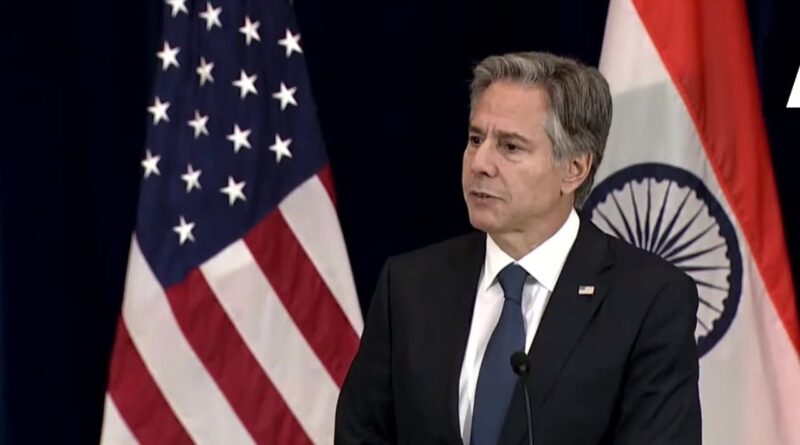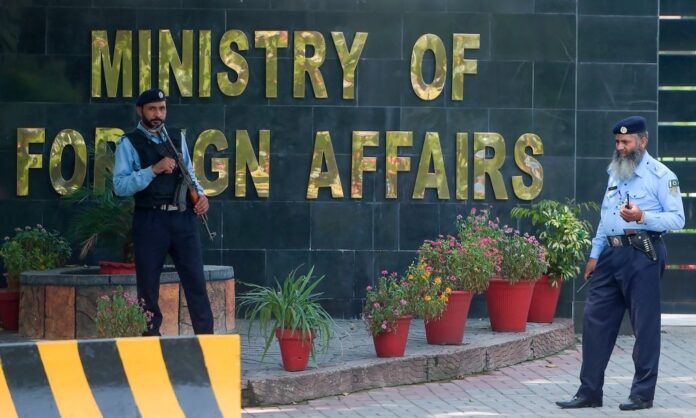
WASHINGTON: The US administration has approved plans for multi-day strikes in Iraq and Syria on targets including “Iranian personnel and facilities”, CBS News reported, citing American officials.
The report follows days of conjecture about how Washington will retaliate after three US service members were killed on Saturday by a drone strike in Jordan, the first US deaths in an escalation of violence across Middle East flashpoints since Israel’s war in Gaza began in October.
US Defense Secretary Lloyd Austin told reporters the United States would work to avoid a wider conflict.
President Joe Biden, under pressure to take firm action without igniting a wider war with Iran, has said he has decided how to respond, without giving details. Tehran has said it will respond to attacks on its territory or its citizens and interests abroad.
The CBS report quoted US officials as saying weather would be a factor in the timing of the strikes, as Washington preferred good visibility to guard against the risk of hitting civilians.
Washington has said the attack on its troops on Saturday in Jordan near the Syrian border bore the “footprints” of Ketaib Hezbollah, a pro-Iranian militia based in neighbouring Iraq.
That group said on Wednesday it was suspending military action against US forces to avoid embarrassing Baghdad.
Violence has erupted in several Middle East countries where Iran’s allied “axis of resistance” armed groups operate since Israel launched its offensive in Gaza in response to attacks by Hamas fighters on Oct. 7.
The United States has 900 troops in Syria and around 2,500 in Iraq.
Iranian advisers assist armed groups in both countries.
But Iran’s elite Revolutionary Guards are pulling senior officers out of Syria after Israeli strikes killed more than half a dozen of their members since December, sources familiar with the matter told Reuters.
Further afield, the Iran-aligned Houthi movement, which controls most populous parts of Yemen, has attacked shipping in the Red Sea in what it says is solidarity with Gaza, drawing retaliatory strikes from the United States and Britain.
Overnight, the US military said it had hit up to 10 drones in Yemen being prepared for launch. A US Navy ship also downed three Iranian-made drones and a Houthi anti-ship missile.
Hamas ‘insisting Israel must pull out’
This week has seen an acceleration of diplomatic efforts to achieve a ceasefire in Gaza, even as fighting has intensified.
Qatari and Egyptian mediators presented Hamas this week with the first concrete proposal for an extended halt to fighting, agreed with Israel and the US at talks in Paris last week.
Hamas says it is studying the text. A Palestinian official close to the negotiations told Reuters Hamas was unlikely to reject it outright, but would demand further guarantees that fighting would not resume.
“For the agreement to be signed,” the official said on condition of anonymity, “it must ensure Israel will commit to ending the war in Gaza and pull out from the enclave completely.”
The Palestinian official said the Paris text envisages a first phase lasting 40 days, during which fighting would cease while Hamas freed remaining civilians among the more than 100 hostages it still holds. Further phases would see the handover of Israeli soldiers and bodies of dead hostages.
The head of the Hamas political unit in exile, Sami Abu Zuhri, told Reuters that the group had nothing to add after announcing two days ago that it was studying the truce offer.
Such a long pause would be a first since Oct. 7, when Hamas fighters attacked Israel, killing 1,200 people and capturing 253 hostages, precipitating an Israeli offensive that has laid waste to much of Gaza. Health officials in the enclave said on Thursday the confirmed death toll had risen above 27,000, with thousands more dead still lying under the rubble.
The only pause in the fighting so far, at the end of November, lasted only a week. Aid agencies have pleaded for an extended respite to alleviate a humanitarian catastrophe.
The main disagreement appears to be over what would follow any truce. Israeli Prime Minister Benjamin Netanyahu has vowed not to pull troops out until “total victory”, defined as eradicating Hamas.
‘All we want is a ceasefire’
Diplomatic progress has been accompanied by some of the most intense fighting so far. Israel launched a huge ground assault last week to capture Gaza’s main southern city, Khan Younis. Combat has also surged in northern areas that Israel claimed to have subdued weeks ago.
Residents said Israeli forces pounded areas around hospitals in Khan Younis overnight, and stepped up attacks close to Rafah on the enclave’s southern edge, where more than half of Gaza’s population is sheltering, mainly in makeshift tents and public buildings.
There had been fierce resistance in the city, and relentless bombardment from air, ground and sea as tanks advanced, said Osama Ahmed, 49, a father of five from Gaza City now sheltering in western Khan Younis.
They haven’t entered deep into Al-Mawasi where we live but every day they get closer,” he told Reuters by phone. “All we want is a ceasefire now.”
The Israeli military said troops fighting at close quarters and directing airstrikes had killed “dozens of terrorists” in the past day in Khan Younis. AFP
Please visit our website London Institute of Peace Research for latest peace news


